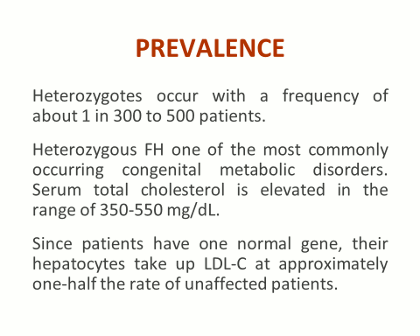Toth - Figure 2 - Heterozygous prevalence Text
Familial hypercholesterolemia (FH) is an autosomal dominant genetic disorder that is associated with loss of function mutations in the low-density lipoprotein (LDL) receptor. The LDL receptor binds LDL particles and removes them from the systemic circulation. Patients with 2 abnormal copies of the LDLR gene have a total, or near total, loss of LDL receptor function and have homozygous FH; patients who inherit only one abnormal copy have heterozygous FH and some capacity for LDL binding and clearance.
As seen in the Figure, heterozygous FH is one of the most commonly occurring congenital metabolic disorders worldwide, occurring with a frequency of about 1 in 300-500 patients. Throughout the world approximately 10 million people have heterozygous FH. The average serum total cholesterol in these patients is in the range of 350-550 mg/dL – in other words, severely elevated, when “normal” total cholesterol should be <200 mg/dL. Since heterozygotes have one normal gene (and about half of the normal number of LDLRs), this means that their hepatocytes take up LDL cholesterol at approximately one half the rate of unaffected patients. J Clin Lipidol. 2011; 5(6).
